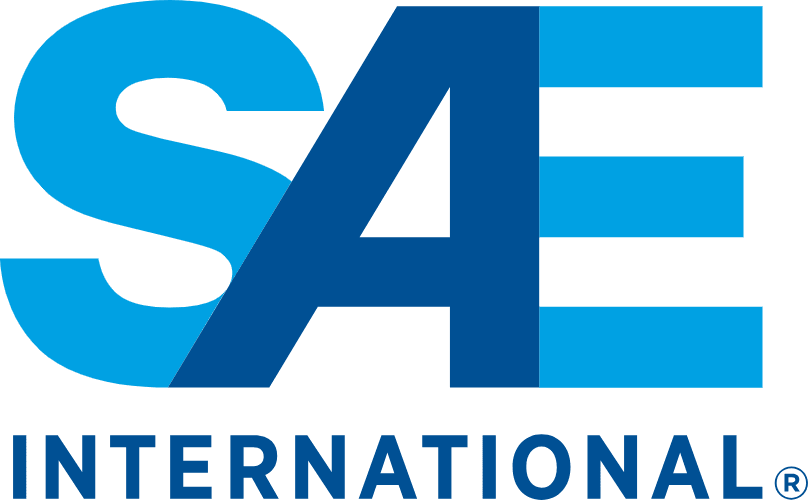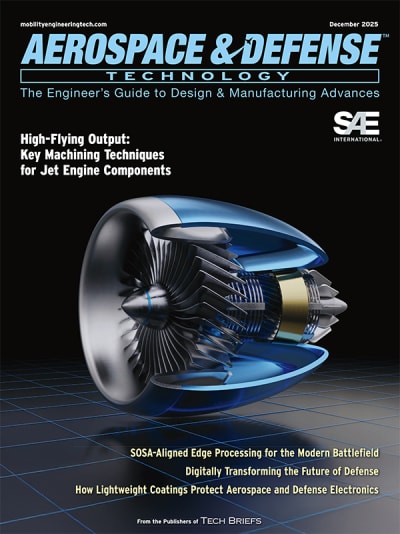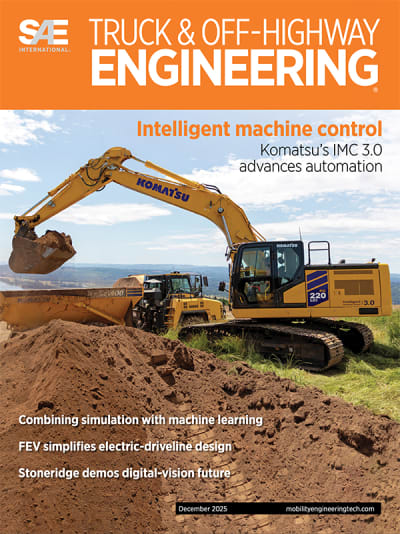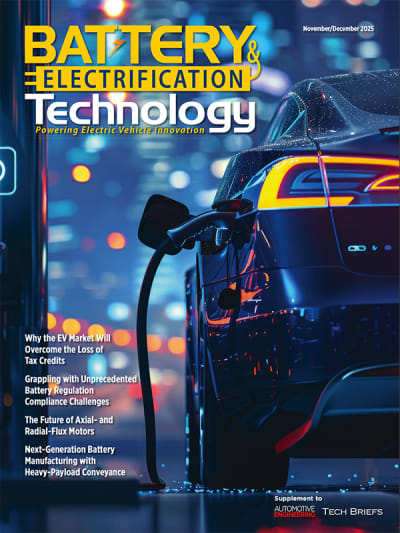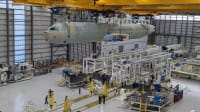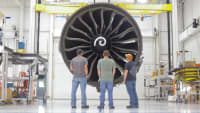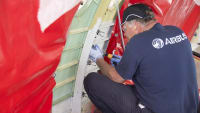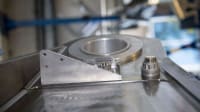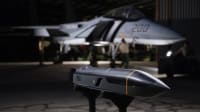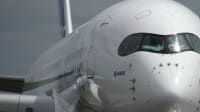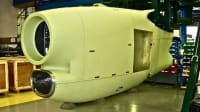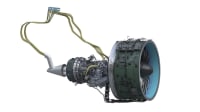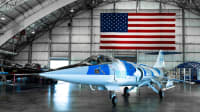How Aerospace Manufacturers are Adjusting to Ongoing Tariff Changes

Aerospace and defense original equipment manufacturers are monitoring ongoing changes to tariff policies by the U.S. and other nations with plans in place for the worst case scenarios, where some would face increased costs on international sales of aircraft and sourcing of parts and components. According to comments made by several prominent aerospace executives at the Bernstein Strategic Decisions Conference held virtually May 28-30, — and on recent earnings calls — most are in favor of a return to the zero tariff environment that they have enjoyed for several decades.
Throughout May, there were a series of changes and a major court decision related to tariffs that were first enforced by the U.S. government in April. Most notably, on May 12, the U.S. and China reached an agreement on a 90-day pause on the reciprocal tariffs each nation imposed on the other's imports in April. China reduced its 125 percent import tariff on all U.S. products to 10 percent, and the U.S. reduced its 145 percent tariff on Chinese imports to 30 percent.
The U.S. has also kept in place a 10 percent tariff on all imports from all foreign countries, while also reaching individual trade agreements with some nations on certain products and goods. On May 8, for example, a new deal was announced between the U.S. and U.K. that keeps an across the board 10 percent tariff rate on all trade between the two nations, while exempting some products, including aerospace parts and components.
Under this flurry of government actions and bi-lateral agreements, airplane manufacturers are still selling and assembling aircraft with parts, facilities and customers located around the world.
“I think we're going to be in a dynamic environment for a while here until some of these unilateral or bilateral agreements are put in place. Having said that, we identified from an input tariff perspective about less than $500 million of impact. It's primarily in a product we're importing from Japan and from Italy, and also primarily on the 787. We are paying duties today, tariff duties on those imports. But in many cases, those airplanes get re-exported and there's a duty drawback process. So, we're able to recover the duties we pay,” Ortberg said.
Boeing has suppliers located in Italy and Japan that provide structures primarily for their 787 Dreamliner, and other widebody commercial aircraft, as Ortberg previously explained on the company’s first quarter earnings call in April.

Ortberg said he does not expect the reciprocal tariffs previously enacted by the U.S. and China to be in place "long term." Boeing experienced the impact of the tariffs in April when Chinese airlines refused to take scheduled deliveries of aircraft that were subject to the newly enacted tariffs at that time. During Boeing’s first quarter earnings call, Ortberg said the company had scheduled deliveries of 50 total jets to airlines based in China in 2025. That number includes 41 aircraft that are being assembled or are already built.
At the Bernstein event, Ortberg said the first deliveries of previously scheduled aircraft to Chinese airlines are scheduled to begin next month.
“We have to watch that and make sure we don't have other regions of the world where we get retaliatory tariffs, and we're unable to deliver aircraft that we have produced for those areas,” he said.
Executives representing companies that supply aircraft components and parts for Boeing aircraft also discussed how their own operations are being impacted by tariffs. Howmet Aerospace for example, supplies airfoils featured on Boeing's 737 MAX aircraft. They also provide forging and castings for Boeing aircraft subassemblies.
Howmet Aerospace CEO John Plant told the Bernstein event attendees that he feels similar to many others in the industry watching ongoing changes to tariffs. His company, like other aerospace suppliers, has assessed the potential impact of the tariffs on their operations with consideration for a worst case scenario. The worst case for Howmet is an estimated $15 million in new expenses due to the added costs of new tariffs.
"I'd put it out to a boundary of $15 million for the year, but it's probably trended better than that in the intervening period," Plant said. "Europe's has bounced around a bit this month, and it's like, what's the latest exemption? I find it difficult to be cogently about it each day.”
GE Aerospace, which helps supply the LEAP engines that power Airbus A320s and Boeing 737s under its 50-50 joint venture with Safran called CFM International, has also assessed the potential worst case scenario impact of tariffs on their operations. GE Aerospace CEO H. Lawrence Culp said the previously enacted U.S.-China tariffs could cause $500 million in "headwinds" for GE Aerospace for the year.
Culp said his company is active in discussions with U.S. government officials about the global nature of the aerospace industry, and why constant changes to tariffs are negative for GE.
"No one's more invested in U.S. manufacturing competitiveness, innovation and the like than GE Aerospace. When we've sat down with the administration, what we've tried to articulate is that unlike many sectors of our economy, aerospace is unique," Culp said. "Aerospace enjoys a $75 billion annual trade surplus. And that's largely on the back of 1979 Civil Aviation Agreement that allowed for basically tariff free trade in both directions across the Atlantic. And in many ways, that I think is the objective of the America first trade agenda. And we've drawn that parallel, and are advocating for a return to that arrangement."
The agreement that Culp is referring to, the Agreement on Trade in Civil Aircraft , became a World Trade Organization (WTO) plurilateral agreement on Jan. 1, 1980. It requires participating WTO members to eliminate all tariffs on civil aircraft, engines, flight simulators and related parts and components when engaging in trade with other participating WTO members. Participating members include the U.S., China, most of Europe, Brazil and Canada among other nations that are major sources of aerospace manufacturing.
The Aerospace Industries Association (AIA) recently published a white paper also advocating the "zero-for-zero" trade benefits of the civil aircraft agreement.
"The white paper underscores that, thanks to this agreement, the U.S. aerospace industry boasts the highest trade balance of any manufacturing sector, nearly $75 billion, and the second highest level of exports, exceeding $135 billion," AIA writes in a press release announcing the white paper. "Over the past 45 years, since the agreement was first created, U.S. commercial aerospace exports have surged by more than 2,100 percent."
Other aerospace executives have expressed similar sentiments and a desire to return to the 1979 law cited by Culp.
During their first quarter earnings call held in May, Embraer executives said that they're taking actions to minimize the impact of any tariffs on their aircraft production headquartered in Brazil. Embraer President Francisco Gomes Neto said that since a significant amount of the parts and components for their aircraft is produced in the U.S., he did not expect a major financial impact on their ability to source parts or produce and sell aircraft internationally.
"We are arguing for the return of zero tariffs on the aerospace production chain, as it has been the case for many decades," Neto said.
The CEO of Boeing's largest rival, Airbus, shares the views on the 1979 law expressed by GE and Embraer. Airbus CEO Guillaume Faury also discussed the changing nature of the tariff rates during the company's first quarter earnings call. Faury said Airbus is taking all the actions they can to avoid paying increased costs on new deliveries of aircraft, and that their main concern is with aircraft and parts that are imported into the U.S. from international locations, and U.S.-produced aircraft and parts that are shipped to China. Their final assembly line in Alabama helps minimize the impact of tariffs on Airbus aircraft they produce for U.S. airlines.
Faury would prefer no tariffs at all.
"We are of the opinion, and we believe that the situation should come back to the previous ex-ante situation where civil aerospace parts, equipment and systems, including planes, were free of tariffs," Faury said during the Airbus first quarter earnings call. "That has benefited the industry at large and mainly — and even potentially primarily to the U.S. industry. And I heard from several sources, reliable ones, that it's also the view of the U.S. aerospace industry that the best outcome of this would be to revert to the zero tariffs 1979 agreement that is in place."
Top Stories
INSIDERDefense
![]() F-35 Proves Nuke Drop Performance in Stockpile Flight Testing
F-35 Proves Nuke Drop Performance in Stockpile Flight Testing
INSIDERMaterials
![]() Using Ultrabright X-Rays to Test Materials for Ultrafast Aircraft
Using Ultrabright X-Rays to Test Materials for Ultrafast Aircraft
INSIDERManufacturing & Prototyping
![]() Stevens Researchers Test Morkovin's Hypothesis for Major Hypersonic Flight...
Stevens Researchers Test Morkovin's Hypothesis for Major Hypersonic Flight...
INSIDERManufacturing & Prototyping
![]() New 3D-Printable Nanocomposite Prevents Overheating in Military Electronics
New 3D-Printable Nanocomposite Prevents Overheating in Military Electronics
INSIDERRF & Microwave Electronics
![]() L3Harris Starts Low Rate Production Of New F-16 Viper Shield
L3Harris Starts Low Rate Production Of New F-16 Viper Shield
INSIDERRF & Microwave Electronics
Webcasts
Energy
![]() SAE Automotive Engineering Podcast: Additive Manufacturing
SAE Automotive Engineering Podcast: Additive Manufacturing
Manufacturing & Prototyping
![]() A New Approach to Manufacturing Machine Connectivity for the Air Force
A New Approach to Manufacturing Machine Connectivity for the Air Force
Automotive
![]() Optimizing Production Processes with the Virtual Twin
Optimizing Production Processes with the Virtual Twin
Power
![]() EV and Battery Thermal Management Strategies
EV and Battery Thermal Management Strategies
Energy
![]() How Packet Digital Is Scaling Domestic Drone Battery Manufacturing
How Packet Digital Is Scaling Domestic Drone Battery Manufacturing
Materials
![]() Advancements in Zinc Die Casting Technology & Alloys for Next-Generation...
Advancements in Zinc Die Casting Technology & Alloys for Next-Generation...
